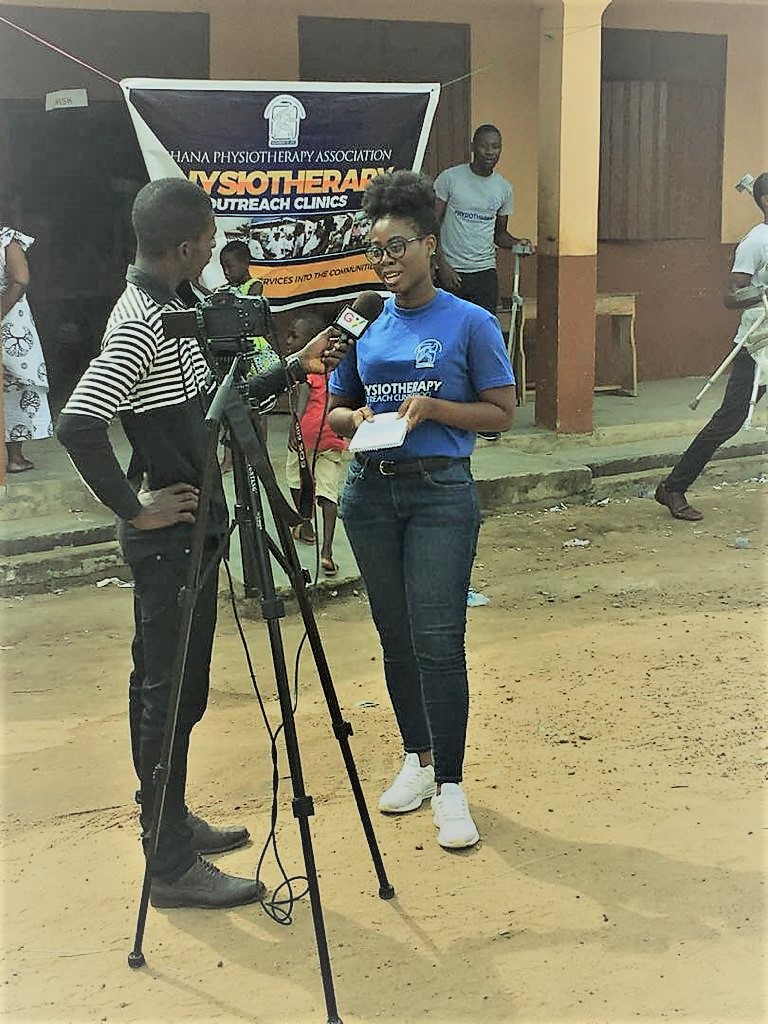The global economic recession following the COVID-19 pandemic, along with changes in climate patterns has magnified already existing global challenges that numerous countries are facing. The urgency to achieve the seventeen UN Sustainable Development Goals (SDGs) has never been greater. Research shows that patients value patient-therapist interactions and physiotherapists can positively impact patients (Casey, Nicholas & Nora, 2012). Our subtle actions (as individuals) and motivational interactions (as professionals) with our clients could go a long way to help achieve some of the UN SDGs.
Achieving SDG3 (good health and wellbeing)
Physiotherapists can play a role in the SDGs in the prevention of communicable and non-communicable diseases (NCDs) as highlighted by Narain & Mathye (2019). Through exercise prescription and encouraging engagement in physical activity, we can work closely with other healthcare professionals to reduce the incidence rate of NCDs. Exercise has several benefits including reducing weight, lowering high blood pressure, improving bone density and mental health. This puts physiotherapists in an ideal position to advocate for and sensitize their clients and the general population about the importance of exercise and increased physical activity in achieving good health and wellbeing.
Community physiotherapy and physiotherapy outreaches, where physiotherapy services are brought to members of the community, are effective ways of promoting good health and wellness. In Ghana, for example, physiotherapy outreach clinics screen for conditions including, but not limited to musculoskeletal conditions, neurological conditions, high blood pressure and physiotherapy indicated paediatric conditions. Referrals are then given for follow up visits to the nearest physiotherapy department.
These programs also present an excellent opportunity to educate communities about the prevention and management of NCDs such as stroke, diabetes, hypertension, and cardiovascular diseases through lifestyle changes. Education could extend to musculoskeletal conditions, geriatric conditions, delayed developmental milestones and other paediatric conditions managed by physiotherapists. Mass media channels like television and radio could be utilized as a means of educating the masses about NCDs and guide their prevention and management. Online resources and social media platforms could be used as an efficient means of reaching larger populations as technological advancement is catching up fast in low- and middle-income countries.

Woyram Abla Kofi-Bediako
PT, BSc, MSc Human Factors and Ergonomics (University of Nottingham)
Woyram Abla Kofi-Bediako is a Ghanaian Physiotherapist whose interests lie in Ergonomics and the impact of the environment on human health. Woyram is a former Physiotherapy Assistant Lecturer and Co-Founder of the Chalé Foundation, a Ghanaian non-profit organization committed to improving the livelihoods of disabled and disadvantaged children. She loves travelling, gardening, dancing and working out to stay fit.

Achieving SDG 5: Gender equality, and SDG 10: Reduced inequalities
Senior physiotherapists could empower younger generations of physiotherapists by mentoring, empowering and motivating more female physiotherapists. Physiotherapy employers could foster gender equality by offering females equal opportunities to work. Ensuring that female employees’ salary corresponds to their job description and is equal to that of their male colleagues should be the goal. Physiotherapists in higher-income countries could reach out, interact, collaborate with and mentor female physiotherapists in low- and middle-income countries to support them in reaching their maximum potential. Volunteering physiotherapy services to persons with disabilities, the elderly and children who are unable to afford these services would make a tremendous impact. Everyone, including the marginalized, deserves physiotherapy services, especially those in low- and middle-income countries.


SDG 11: Sustainable cities and communities
Physiotherapists can set an example to encourage clients and members of the communities to engage in walking or cycling as a form of exercise. Opting to engage in these forms of physical activity (active transport) where feasible might serve to reduce our carbon footprint (Toner, Lewis, Stanhope & Maric, 2021). Organising periodic health walks, hiking, and cycling events as part of National Physiotherapy Associations’ annual activities are a practical way to achieve this. As low- and middle-income countries continue to experience the rapid expansion of urban communities, greenhouse gas emissions are bound to increase. Anticipating the rise in carbon emissions, developing a culture of carbon footprint reduction through simple acts as these can be a significant contribution.
SDG 13: Climate Action, SDG 14: Life below water and SDG 15: Life on land
To impact climate change, we could also take individual action, for example by planting trees or cleaning up beaches. Physiotherapists as a professional group, in collaboration with climate change organizations, could participate in reforestation or animal and aquatic environmental protection activities. Growing organic vegetables in our backyards or gardens without nitrous fertilizers serves as one effective way to preserve life on land by preventing spillage into the aquifers. Engaging in and encouraging environmental protection activities to save the planet could be incorporated into our daily lives. These goals could be facilitated by physiotherapy educators teaching student physiotherapists about climate change at the tertiary level. Institutions responsible for the formal training of physiotherapists should endeavour to embed environmental protection and management modules into physiotherapy curricula.
SDG 11: Sustainable cities and communities
Physiotherapists can set an example to encourage clients and members of the communities to engage in walking or cycling as a form of exercise. Opting to engage in these forms of physical activity (active transport) where feasible might serve to reduce our carbon footprint (Toner, Lewis, Stanhope & Maric, 2021). Organising periodic health walks, hiking, and cycling events as part of National Physiotherapy Associations’ annual activities are a practical way to achieve this. As low- and middle-income countries continue to experience the rapid expansion of urban communities, greenhouse gas emissions are bound to increase. Anticipating the rise in carbon emissions, developing a culture of carbon footprint reduction through simple acts as these can be a significant contribution.
SDG 13: Climate Action, SDG 14: Life below water and SDG 15: Life on land
To impact climate change, we could also take individual action, for example by planting trees or cleaning up beaches. Physiotherapists as a professional group, in collaboration with climate change organizations, could participate in reforestation or animal and aquatic environmental protection activities. Growing organic vegetables in our backyards or gardens without nitrous fertilizers serves as one effective way to preserve life on land by preventing spillage into the aquifers. Engaging in and encouraging environmental protection activities to save the planet could be incorporated into our daily lives. These goals could be facilitated by physiotherapy educators teaching student physiotherapists about climate change at the tertiary level. Institutions responsible for the formal training of physiotherapists should endeavour to embed environmental protection and management modules into physiotherapy curricula.

We can all help in our own small way, to help make the planet a better place to live in, and even more so as physiotherapists. We specialize in movement and optimizing the function of people. Let us champion this cause to guide people to move and function in ways geared towards living a healthy, well-balanced life, in tune with our planet. Let us do this for present and future generations.
Woyram Abla Kofi-Bediako
Physiotherapist, Ergonomist, Former Physiotherapy Assistant Lecturer, Co- Founder of Chalé Foundation
References
Casey L. P., Nicholas F. T., Nora S. (2012), ‘Patients value patient-therapist interactions more than the amount or content of therapy during inpatient rehabilitation: a qualitative study’, Journal of Physiotherapy, Volume 58, Issue 4,Pages 261-268, ISSN 1836-9553, doi:10.1016/S1836-9553(12)70128-5
Narain, S., & Mathye, D. (2019), Do physiotherapists have a role to play in the Sustainable Development Goals? A qualitative exploration, The South African journal of physiotherapy, 75(1), 466. doi:10.4102/sajp.v75i1.466
Toner, A., Lewis, J.S., Stanhope, J., Maric, F. (2021), Prescribing active transport as a planetary health intervention – benefits, challenges and recommendations, Physical Therapy Reviews. doi:10.1080/10833196.2021.1876598
United Nations (2021), Sustainable Development Goals, Retrieved 14 August 2021, https://www.un.org/sustainabledevelopment/
UN General Assembly, Transforming our world: the 2030 Agenda for Sustainable Development, 21 October 2015, A/RES/70/1, available at: https://www.refworld.org/docid/57b6e3e44.html [accessed 15 August 2021]


Good piece PT Woyram
Very educative and hope for the best in my own small way.
Great read and full of ideas for us to implement. For sustainable cities, I think we can also set up outdoor gyms in green spaces for communities to have an easily accessible place to do some exercises and also provide a place for relaxation.
Well done Ms Kofi-Bediako
Excellent article Ms. Kofi-Bediako. I am from the tropics and I concur with you that implementing more therapy-driven programmes will indeed be very impactful for islands that are so exposed to all elements.
Excellent article and very educative.
Excellent piece,very informative
well done .very informative